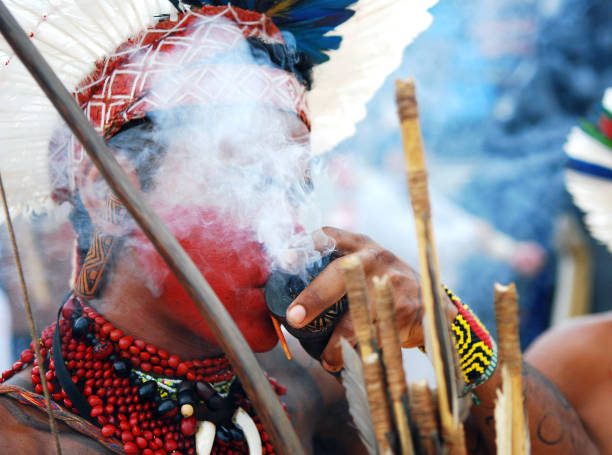NEWS
Regional Customs: Discover the Distinctive Traditions and Rituals of Different Areas
Each region of the world has its own unique set of customs and rituals that define its cultural identity. These regional customs reflect the history, values, and lifestyles of the people living in those areas. Exploring these traditions offers a fascinating glimpse into diverse ways of life and helps preserve the rich tapestry of human heritage. Here’s a guide to some distinctive customs and rituals from different regions around the globe.
1. Japanese Tea Ceremony (Japan)
1.1. Overview
- Location: Japan, with notable ceremonies in Kyoto and Tokyo.
- Timing: Can be held year-round, often during special occasions.
- Activities: A meticulous ritual of preparing, serving, and drinking matcha (green tea).
1.2. Highlights
- Ceremonial Process: Involves precise movements, from whisking the tea to serving it in a specific manner.
- Focus: Emphasizes harmony, respect, purity, and tranquility.
1.3. Cultural Significance
- History: Rooted in Zen Buddhism, reflecting a deep appreciation for simplicity and mindfulness.
- Social Aspect: Provides an opportunity for quiet reflection and meaningful conversation.
2. Day of the Dead (Mexico)
2.1. Overview
- Location: Celebrated throughout Mexico, especially in Oaxaca and Mexico City.
- Timing: November 1st and 2nd.
- Activities: Creating altars, offering food, and honoring deceased loved ones.
2.2. Highlights
- Altars (Ofrendas): Decorated with photographs, mementos, and favorite foods of the departed.
- Cultural Symbols: Marigold flowers, sugar skulls, and traditional music.
2.3. Cultural Significance
- Tradition: Blends indigenous and Catholic traditions, celebrating the connection between life and death.
- Community: Fosters family gatherings and remembrance.
3. Carnival (Brazil)
3.1. Overview
- Location: Rio de Janeiro and other Brazilian cities.
- Timing: The week before Lent, typically in February.
- Activities: Parades, samba dances, and street parties.
3.2. Highlights
- Samba Schools: Compete in elaborate parades with dazzling costumes and floats.
- Music and Dance: Central to the celebration, featuring vibrant rhythms and energetic performances.
3.3. Cultural Significance
- Origins: Combines African, indigenous, and Portuguese influences.
- Festivity: Embraces joy, creativity, and community spirit.
4. Holi Festival (India)
4.1. Overview
- Location: Celebrated across India and among Indian communities globally.
- Timing: Typically in March.
- Activities: Throwing colored powders, dancing, and festive meals.
4.2. Highlights
- Color Play: Participants throw vibrant powders and water at each other.
- Traditional Foods: Includes sweets and drinks like thandai.
4.3. Cultural Significance
- Meaning: Marks the arrival of spring and the triumph of good over evil.
- Unity: Promotes joy and inclusivity, breaking social barriers.
5. Tết Nguyên Đán (Vietnam)
5.1. Overview
- Location: Celebrated throughout Vietnam.
- Timing: The Lunar New Year, usually in January or February.
- Activities: Family reunions, feasting, and honoring ancestors.
5.2. Highlights
- Traditional Foods: Includes bánh chưng (sticky rice cake) and pickled onions.
- Customs: Involves cleaning homes, paying off debts, and visiting temples.
5.3. Cultural Significance
- Tradition: Represents new beginnings and the start of the lunar calendar year.
- Family: Emphasizes family bonds and respect for elders.
6. Oktoberfest (Germany)
6.1. Overview
- Location: Munich, Bavaria, and other cities in Germany.
- Timing: From late September to the first weekend in October.
- Activities: Beer tents, traditional Bavarian food, and music.
6.2. Highlights
- Beer Tents: Serve a variety of German beers, with traditional dishes like pretzels and sausages.
- Attire: Many attendees wear traditional Bavarian costumes such as lederhosen and dirndls.
6.3. Cultural Significance
- History: Originated from a royal wedding celebration in 1810.
- Celebration: Reflects Bavarian culture and hospitality.
7. Chinese Lantern Festival (China)
7.1. Overview
- Location: Celebrated throughout China, with major events in cities like Taipei and Pingxi.
- Timing: On the 15th day of the Lunar New Year.
- Activities: Lantern displays, parades, and fireworks.
7.2. Highlights
- Lanterns: Colorful lanterns are released into the sky or displayed in intricate designs.
- Festivities: Includes traditional performances and local foods.
7.3. Cultural Significance
- Symbolism: Marks the end of Lunar New Year celebrations and symbolizes new beginnings.
- Community: A vibrant event that attracts both locals and tourists.
8. Highland Games (Scotland)
8.1. Overview
- Location: Various locations in Scotland.
- Timing: Typically held during the summer months.
- Activities: Traditional sports, music, and dance.
8.2. Highlights
- Events: Includes caber tossing, hammer throw, and tug-of-war.
- Traditional Attire: Kilts and bagpipes are central to the event.
8.3. Cultural Significance
- Heritage: Celebrates Scottish athletic prowess and cultural traditions.
- Community: Brings together locals and visitors to enjoy Scottish heritage.
9. Mardi Gras (USA)
9.1. Overview
- Location: New Orleans, Louisiana, and other parts of the U.S.
- Timing: The day before Ash Wednesday, varying in February or March.
- Activities: Parades, masquerade balls, and festive foods.
9.2. Highlights
- Parades: Feature colorful floats, live music, and elaborate costumes.
- Cuisine: Includes traditional dishes like King Cake and jambalaya.
9.3. Cultural Significance
- Origins: Reflects a blend of French, Spanish, and Creole influences.
- Festivity: A celebration of excess and indulgence before Lent.
10. Songkran Festival (Thailand)
10.1. Overview
- Location: Celebrated nationwide in Thailand.
- Timing: April 13th to 15th.
- Activities: Water fights, temple visits, and family gatherings.
10.2. Highlights
- Water Fights: Participants engage in friendly water battles in the streets.
- Ceremonies: Includes traditional rituals to honor ancestors and make merit.
10.3. Cultural Significance
- Meaning: Marks the Thai New Year and symbolizes the cleansing of bad luck and the welcoming of new beginnings.
- Community: Encourages social interaction and family bonding.
Conclusion
Exploring regional customs provides valuable insights into the diverse ways communities celebrate their heritage and maintain cultural continuity. These traditions, whether through festivals, rituals, or everyday practices, highlight the rich variety of human experience and help us appreciate the uniqueness of different cultures. Engaging with these customs fosters cross-cultural understanding and strengthens our global community.

